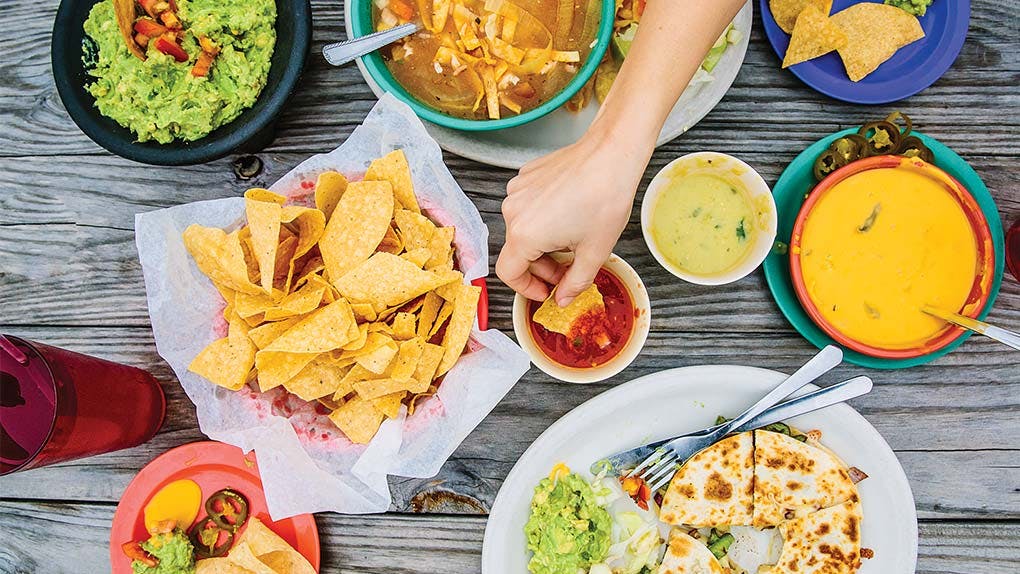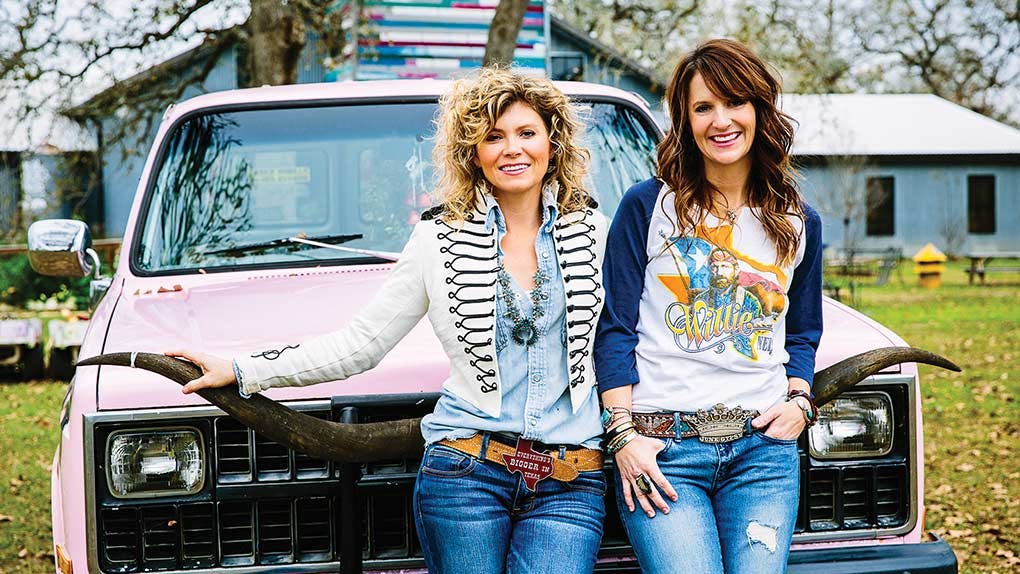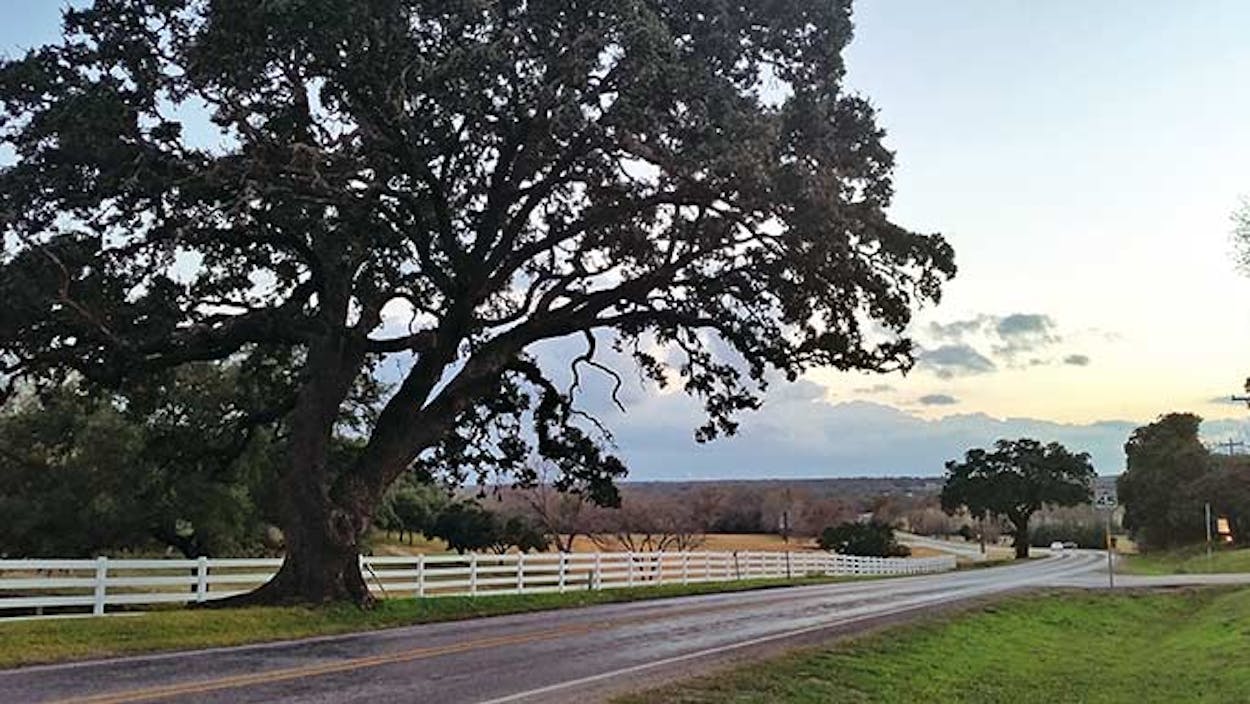From where I stood on the shoulder of Texas Highway 237, the dozen old buildings just beyond the barbed-wire fence looked like a movie set that had long ago seen its last take. The saloon and the blacksmith shop and the dance hall, though saved from rot and ruin, were empty inside. No cattle lazed by the man-made lake or lowed in the surrounding pastures. There wasn’t much for them to graze on anyway except thin patches of well-trod grass between dirt paths. There were, however, sprouting from the ground like futuristic seedlings, enough electrical outlets to power a sizable RV park.
If you didn’t know any better, you’d think Marburger Farm, a 43-acre events venue that sits about a mile south of the Round Top city limits, was a ghost town or perhaps a historic site maintained by hobbyists with deep reserves of nostalgia and disposable income. Either way, you wouldn’t be too far off.
For about 48 weeks of the year, Round Top is one of the smallest incorporated towns in Texas, with a mere 90 or so residents across its 640 acres. If traffic backs up on the two-lane highway, it’s because there’s loose livestock or maybe a slow-going wide-load flatbed ferrying an old farmhouse to a new address. For the remaining four weeks—two in the spring, two in the fall—Round Top morphs into the bulging epicenter of what has become one of the largest antiques-shopping affairs in the country. Thousands upon thousands of interior designers, corporate merchandisers, professional junkers, and amateur treasure seekers buy and sell and barter their way through an amorphous array of French bombé chests, Italian zebrawood tables, and nineteenth-century chandeliers artfully arranged in tents and warehouses and yard sales that stretch 23 miles from Carmine to La Grange. An estimated 100,000 people—nearly as many as descend on downtown Austin for South by Southwest—wash in each spring and fall. It’s safe to say that every last one of those electrical outlets at Marburger Farm is put to use.
Although I’ve enjoyed this irresistible reverie of unbridled acquisition on several occasions, it wasn’t until I visited this past December, when the circus wasn’t in town, that I fell fully under Round Top’s spell. For starters, I could enjoy an old-fashioned Sunday drive, with no one tailing me as I slowed on back roads to admire log cabins and donkeys just beyond split-rail fences. I also had no trouble making a last-minute reservation at the Prairie, an 1800’s homestead ten minutes from the town square that the British interior designer Rachel Ashwell, who helms the Shabby Chic empire, fashioned into a five-cottage B&B and wedding venue in 2011 (Johnny Mathis sang at a ceremony there last spring). During the antiques shows, snagging a room at any of the hotels, motels, or vacation rentals within a forty-mile radius requires booking months in advance, and the Prairie’s waiting list for that period stretches into years. But when I arrived, I found a note with my name on it, a key in the door of my tin-roofed cottage, and nobody else around.

It was also easy enough to imagine life as a local as I ate in the restaurants and browsed the shops back “in town.” At Los Patrones, the waiters seemed to know, without asking, which beers which patrons preferred. When I sat down to dinner at Royers Cafe, I drew a few curious looks as the only solo diner, but by the time I’d polished off my jalapeño soup and shrimp-stuffed, bacon-wrapped quail, families at neighboring tables were bringing me up to speed on the local scuttlebutt. Afterward, I perused the For Sale flyers in the window of the Round Top Real Estate office next door; for $1.2 million I could be moving into a modern two-story limestone on six and a half acres just three miles from the square. Country living may be simpler, but nobody said it’d be cheaper.

Weekenders aren’t exactly a new phenomenon here. Moneyed urbanites have been hanging “Home Sweet Second Home” signs in Round Top since at least the early sixties, when a trio of Houston society women with impressive CVs took a fateful shining to the place. In 1959 Hazel Ledbetter (architecture and design enthusiast and president of the Houston Symphony Orchestra’s women’s committee) bought up several properties in the area, including the historic 130-acre Winedale farmstead. In 1963 she sold the land to her friend Ima Hogg (former first daughter of Texas and noted philanthropist and patron of the arts), who rehabilitated its three houses and two barns before donating the site to the University of Texas, her alma mater, in 1967. Meanwhile, their friend Faith Bybee (preeminent collector of early American and colonial furniture and founder of the Houston Heritage Society) had also been busy restoring more than twenty of the area’s oldest German homes and storefronts, which she and her husband filled with mid-nineteenth-century Texana furnishings; in the late sixties they relocated eleven of those buildings to a seven-acre parcel a block southeast of the 1924 courthouse, to create a museum village called Henkel Square—now Round Top’s mini–retail district.
It was the chance to peek into the three women’s private homes that inadvertently set the wheels in motion for Round Top’s antiquing legacy. In 1968, in an attempt to encourage the county’s growing “mink, martini, and manure” set to stock their own country retreats with America’s finest early furniture, Ledbetter, Hogg, and Bybee asked Emma Lee Turney, a local antiques dealer, to help them produce an antiques show. She said she would, on one condition: that the ladies open their own doors that weekend to entice buyers to come out to “the back side of the moon,” as their Houston friends referred to the humble hamlet. The 22 dealers who lugged their wares to the old Round Top rifle hall had such success that Turney’s show became an annual affair, inspiring coinciding copycat events; 47 years later, nearly 4,500 dealers take up exponentially more acreage and days on the calendar.
As the wealthy weekenders put down even deeper roots (Hogg was instrumental in the creation of esteemed cultural organizations Shakespeare at Winedale and Round Top Festival Institute in the seventies), more visitors had more reasons to visit—and more justifications to become full-time residents. After traveling to the shows for more than a decade, Jolie and Amie Sikes, the DIY-design sisters behind the burgeoning Junk Gypsy brand, finally surrendered to the town’s pull, moving here for good in 2010. They’ve opened an eight-thousand-square-foot World Headquarters retail space (a frequent backdrop for their eponymous show on the Great American Country channel), and they’re about to officially open the eight-room Wander Inn.

When the circus returns in March, the shoppers, after spending days scavenging acres of pricey antiques and priceless junk, will start to think they know the place. But a few might see beyond the hubbub and realize that what they should really be in the market for is Round Top itself—the real experience, a couple weeks out, when the town shrinks back to miles of quiet, undulating space and solitude.








